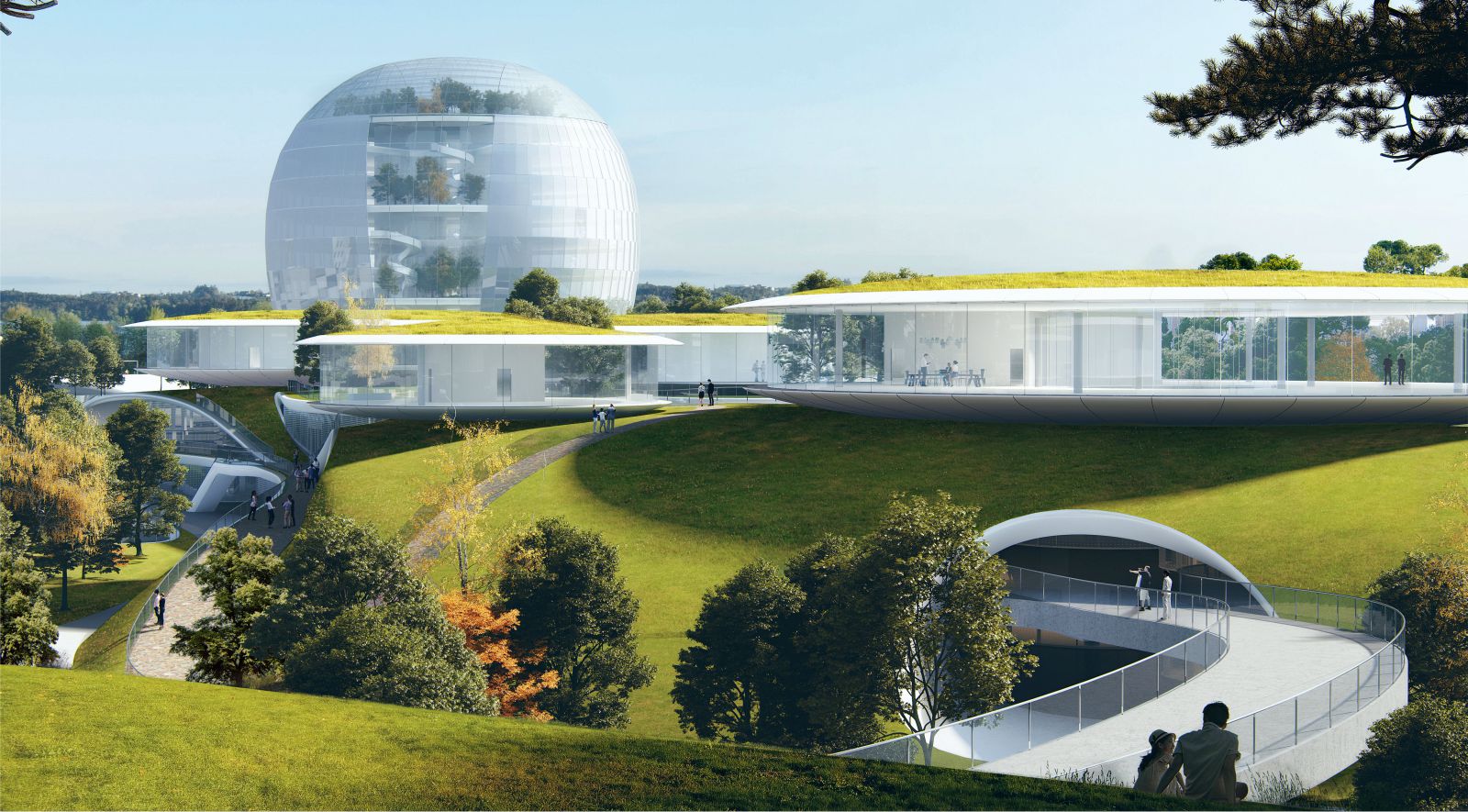The train station is situated in the center of Jiaxing, an interconnected city in southeast China close to Shanghai, Hangzhou, and Suzhou. A key city for several major industries, Jiaxing is referred to as the “home of silk” and the “land of milk and honey.” The project brief covers an area of 35.4 hectares, encompassing Jiaxing Train Station, the plazas to the north and south, and a renovation of the adjacent People’s Park.
Before the renovation, the existing station had reached its maximum capacity. In addition, the disorder of the surrounding transportation system and a deficient supporting infrastructure had led to a decline in the area surrounding the station. Drawing inspiration from Jiaxing’s historic and cultural contexts, MAD’s proposal includes a 1:1 rebuilding of the historic station building derived from archival studies, while creating a new train station underground.
The new station will be bright, efficient, and human-scaled, with a flood of natural light to create a friendly, comfortable environment. The main transportation and commercial functions are to be located in the basement level, allowing the ground-floor space to be given back to nature. A shared space between Jiaxing’s citizens and travelers, this new green urban center will transform into a “train station in the forest.”
A 35.4 Hectare Urban Oasis
MAD’s proposal places the busy transportation junction underground, freeing the ground floor of obtrusive infrastructure, thus allowing the People’s Park to radiate through the scheme into the city, and form an urban oasis. A careful consideration to landscape and massing has formed an axis with the reconstructed old station building at its core.
In front of the station, a large collection of canopy shaped trees have been planted, creating comfortable, natural shades for the plaza. Upon completion, the scheme will become a “borderless park” where citizens and travelers can dwell and enjoy the beautiful natural environment. In contrast with the busy infrastructure beneath, the park will be a place of comfort and quiet, bringing the city center back to the people.
A “Train Station in the Forest”
Looking south along the central axis, the rebuilt station building and the “floating” metal roof of the new station will blend with the forest trees. The station concourse, platforms, and waiting hall are hidden underground, while the building’s single-story height above ground level humbly respects the scale of the old station building. An abundance of natural light floods into the underground waiting hall through skylights and glass curtain walls on the ground floor, creating a subterranean space which is both open and bright.
The internal atmosphere and tone are centered on the human scale, with the aim of creating a pleasant, comfortable experience for travelers. As people move from the waiting hall to the platforms via a futuristic underground tunnel, they observe the rebuilt old station building overhead. Here, a moment is created where old meets new, and a sharp yet composed contrast is showcased between the past and future.
A Commercial Zone underneath the “Forest”
MAD’s scheme also places the station’s commercial functions underground, linking the train station with the city’s transportation hub. In addition, sunken courtyards connect the underground commercial space with the parkland above. To the south of the station, a new above-ground commercial area is created, enclosed by landscaped public lawns that can host a variety of events, festivals, concerts, or markets.
Beneath the urban oasis, a wide variety of functions and services are connected with each other. For instance, visitors at street level can efficiently enter and exit the transport hub, while others meander through the park, visit the railway museum, or explore the commercial area before embarking on their train journey.
A series of transport options are linked throughout the underground system, directly connected to the sunken municipal roads. Bus terminals, a tramway, metro, car parking, and taxi stands are interconnected by the proposed scheme, creating an efficient transportation portfolio accessed from the train station, and fulfilling the demand for transport facilities created by the new commercial zone.
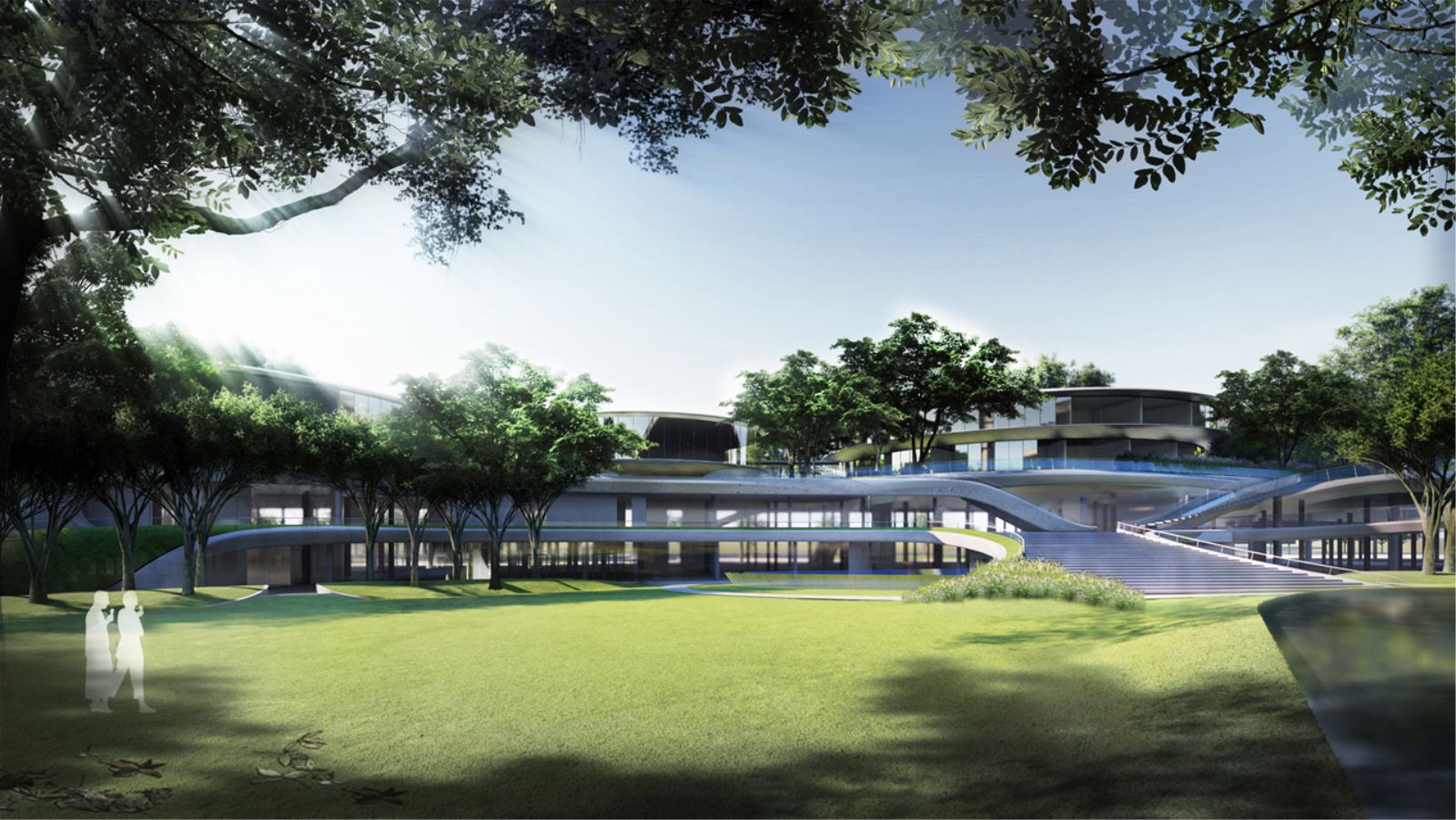
Image © MAD
Through careful transportation planning and vertical use of the space, MAD’s scheme accommodates the existing passenger demands for the station, while also allowing for future sustainable development and expansion. The scheme’s emphasis on connecting with its surroundings will also serve to increase human activity and visitors to the area, enhance its commercial offering, and ultimately rejuvenate the old city center with a new vitality.
The capacity of the train station will be upgraded to three platforms serving six tracks, in contrast to the previous three platforms serving five tracks, with the main upline and downline becoming two arrival and departure tracks respectively. The overall passenger capacity is expected to reach 5.28 million people per year, with peak-time capacity reaching 2,300 people per hour. Source by MAD.
- Location: Jiaxing, China
- Architect: MAD
- Principal Partners in Charge: Ma Yansong, Dang Qun, Yosuke Hayano
- Associate Partners in Charge: Liu Huiying
- Design Team: Cao Chen, Reinier Simons, Yao Ran, Fu Xiaoyi, Yu Lin, Chen Wei, He Shunpeng, Cheng Xiangju, Kaushik Raghuraman, Chen Nianhai, Deng Wei, Cao Xi, Sun Mingze, Huang Zhiyu, Zhang Kai, Li Zhengdong, Dayie Wu, Huai Wei, Claudia Hertrich, Liu Zifan, Xie Qilin, Alan Rodríguez Carrillo, Qiang Siyang, Hou Jinghui, Li Xinyun, Yin Jianfeng, Mathias Juul Frost, Lei Lei, Lu Zihao
- Executive Architects: Tongji Architectural Design (Group) Co., Ltd., China Railway Siyuan Survey and Design Group Co., Ltd.
- Structural Consultant: LERA Consulting Structural Engineers
- Façade Consultant: RFR Shanghai
- Landscape Consultant: Z’scape Landscape Planning and Design
- Lighting Consultant: Beijing Sign Lighting Industry Group
- Signage Consultant: NDC CHINA, Inc.
- Heritage Consultant: Shanghai Shuishi Architectural Design & Planning Corp.,Ltd
- Interior Design Consultant: Shanghai Xian Dai Architectural Decoration & Landscape Design Research Institute Co., Ltd.
- Client: Jiaxing Modernservice Industry Development & Investment (Group) Co., Ltd.
- Site Area: 354,000 sqm
- Building Area: around 280,000 sqm
- Year: 2021
- Images: Courtesy of MAD

Image © MAD 
Image © MAD 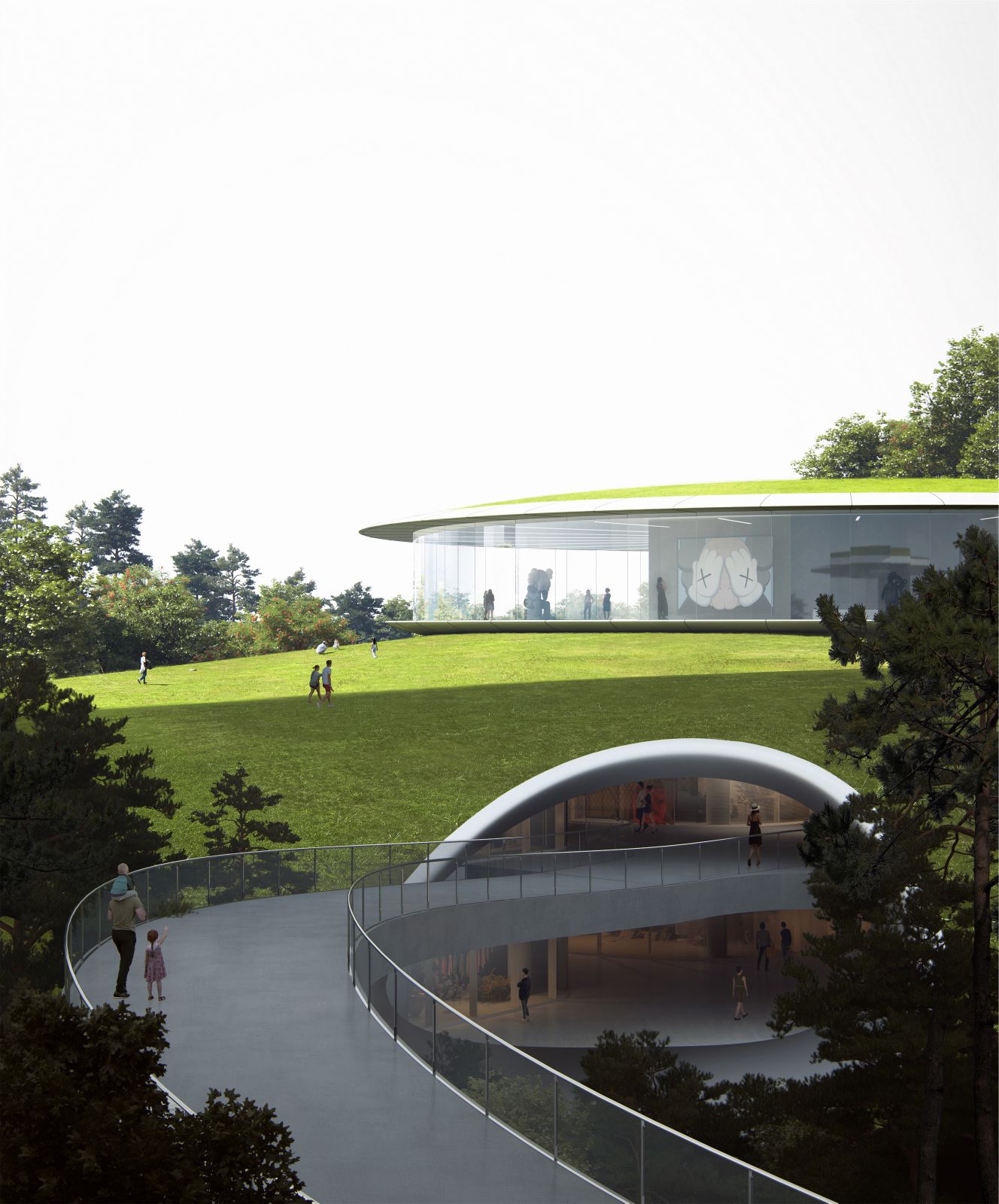
Image © MAD 
Image © MAD 
Image © MAD 
Image © MAD 
Image © MAD 
Image © MAD 
Image © MAD 
Image © MAD 
Image © MAD 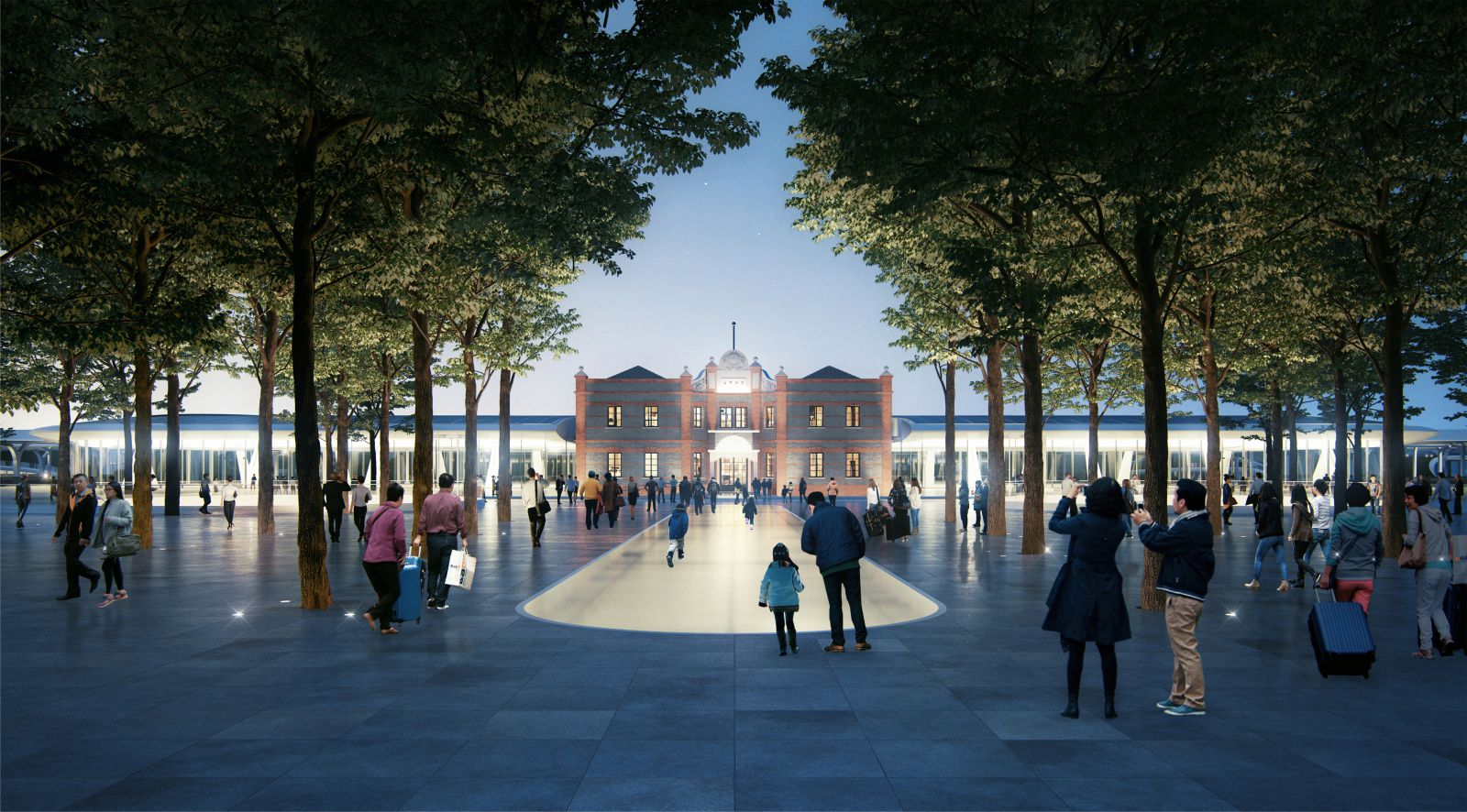
Reconstruct the old station building 
Image © MAD 
Image © MAD 
Image © MAD 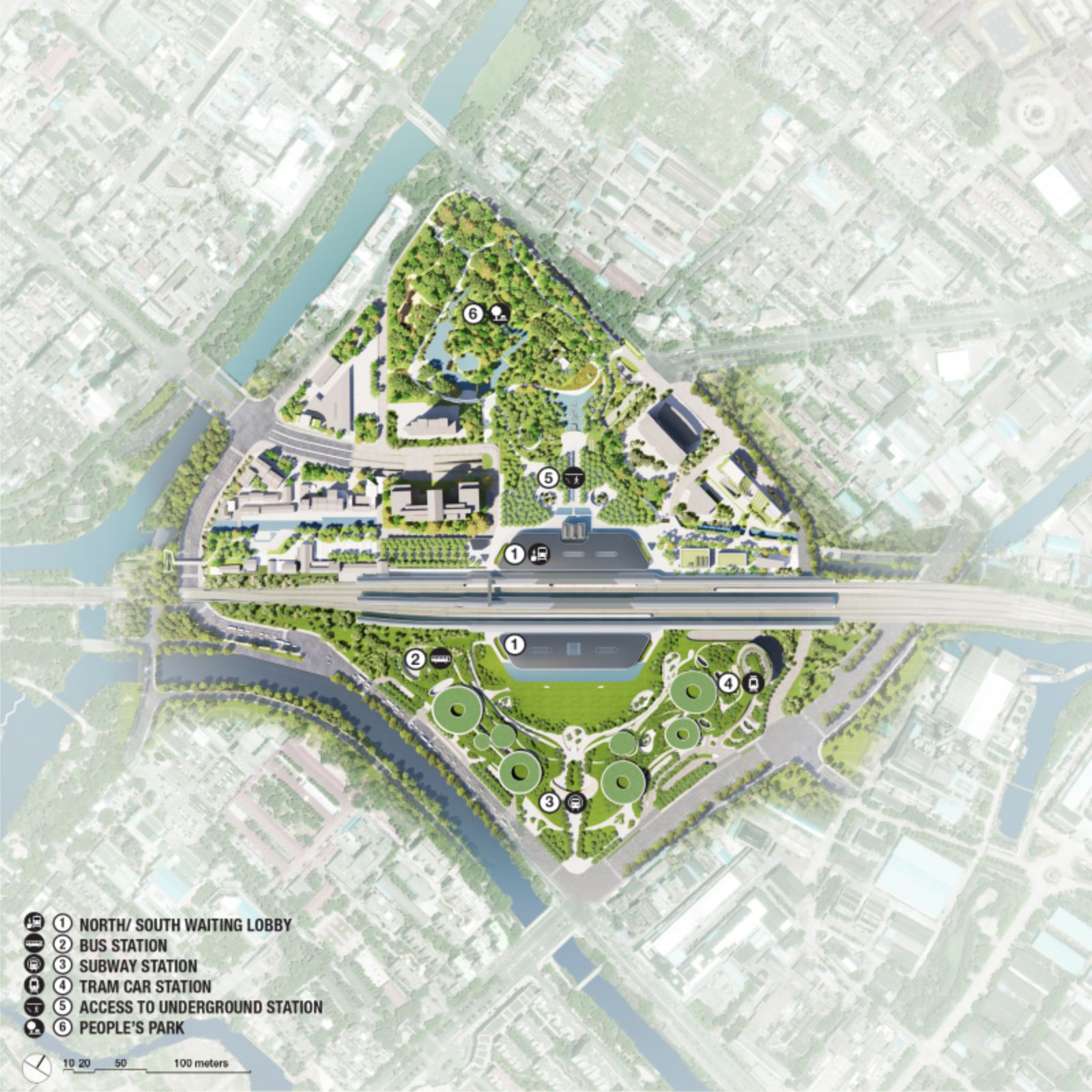
Master Plan 
Station Roof Plan 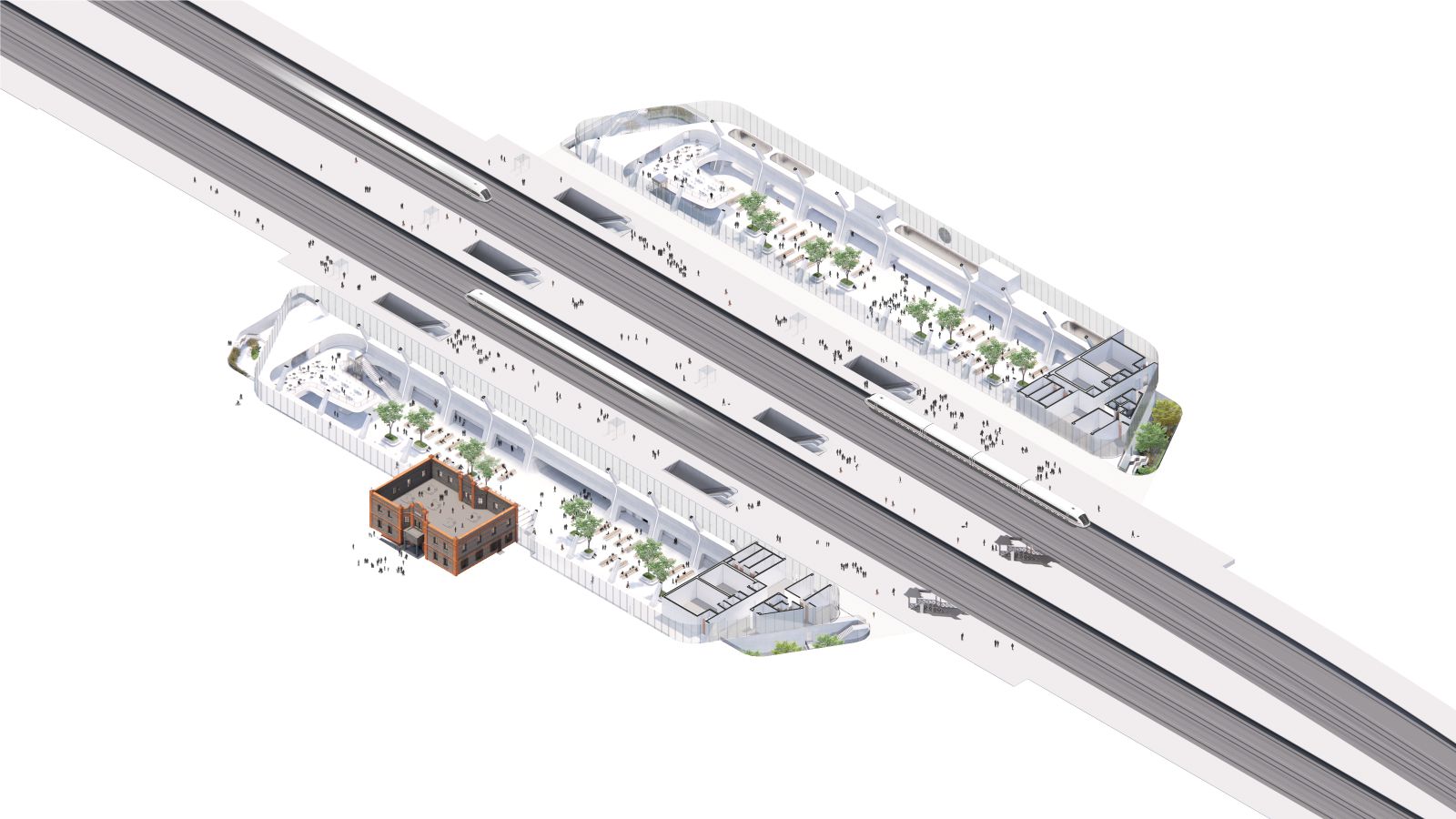
Station Ground Floor Plan 
Station Basement Floor Plan 
Section Diagram 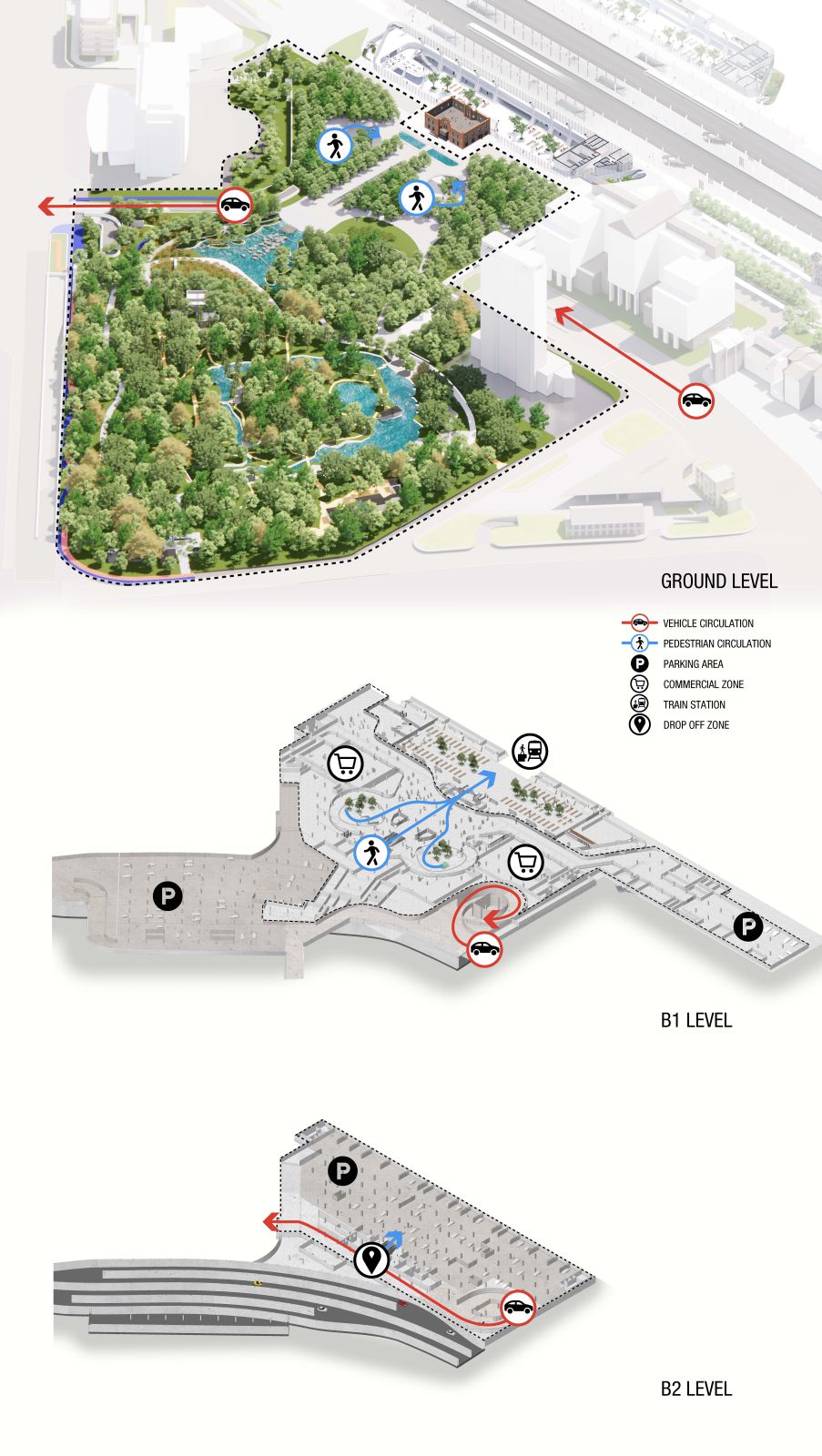
Axonometric Diagram

